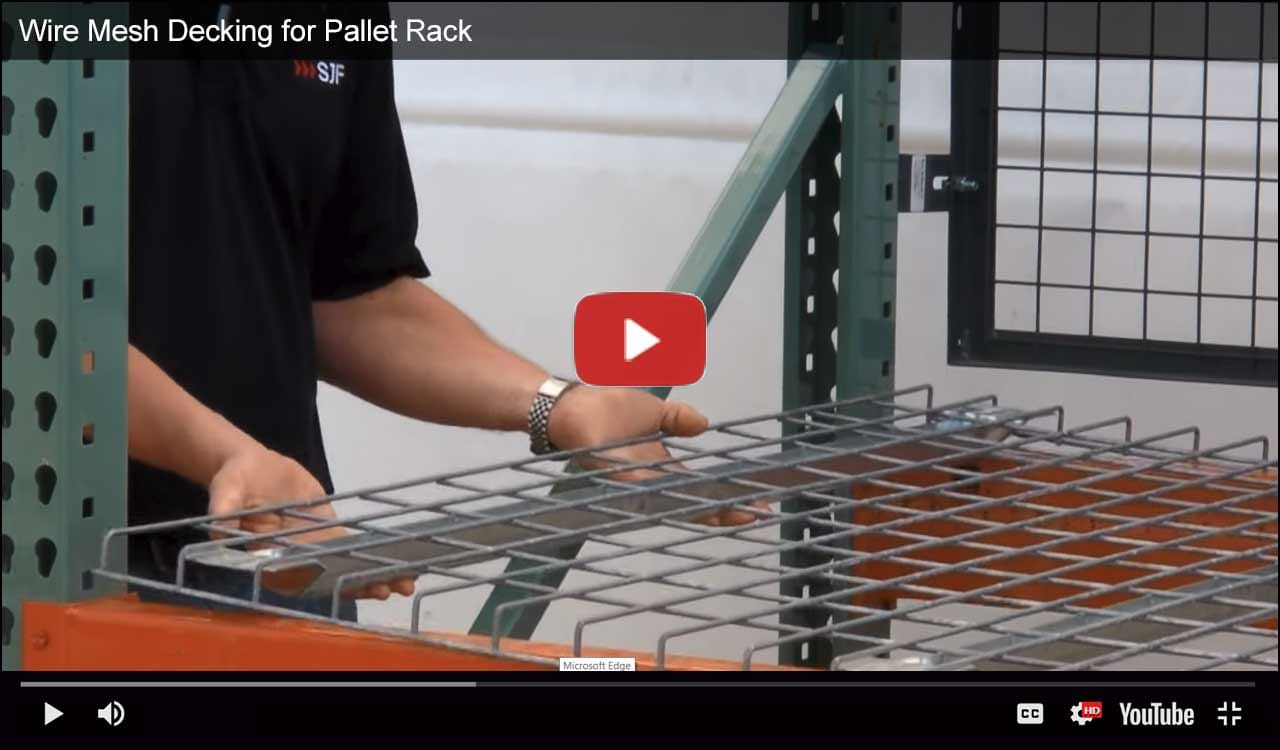What is Wire Mesh Decking?
Wire Decking Guide

Wire decking is a product that works with pallet racks to provide support, safety and other benefits to warehouse racks. Wire decks are easy to install (they simply drop into place), and allow high visibility through all levels of pallet racking.
In addition to providing protection from falling inventory, wire decking can improve air circulation and prevent dust build-up. Wire decks can also help increase overhead sprinkler effectiveness, and many local fire codes require them instead of particle board or plywood.
Wire Deck Options & Terminology
Support Channels
On the underside of each wire deck, support channels are welded to the bottom of the mesh surface. These channels give wire deck rigidity and load bearing capacity. Typically, wire decking uses three or four support channels and supports up to 2,500 lbs. Step channels provide more strength than flanged channels, however each has their own advantages.
Wire Mesh Pattern
Most wire decks made in the past 20 years feature a 2" x 4", 2.5" x 4" or 2.5" x 4.5" grid pattern. Sometimes you may see higher density grids, but these are usually made for applications that required hand stacking or storing small materials.
Waterfalls
The term "waterfall" is used to refer to the end(s) of deck that hang below the deck's surface. Waterfalls provide additional protection to wire decks by making them more resistant to coming off of the pallet rack unexpectedly. The accepted industry standard for waterfall height is 1.5 inches. A shorter waterfall may be warranted where labels or bar codes are needed on the rack's beam face. Waterfalls can also be turned up to provide a back stop on a pallet shelf. Front and rear waterfalls can even be mixed so that one is up and the opposite is down.
Flush Decks
Flush wire decks are useful for hand-stacking and order picking. The flush deck doesn't have edges that could catch an employee's hands. With flush decks, the deck depth measurement refers to the outside dimensions of the rack beams. If your racking is 42" deep (42" from outside to outside of each beam level) you will still need a 42" deep deck however the deck's depth will only be 38.25" deep - or approximately the depth of the inside of the steps of the beams.
Properly Loading Wire Decks
Please Note - Unless storing small or very light weight items on the pallet racking, wire deck is NOT meant to support loads directly. In other words, DO NOT point load wire decking. Pallets must be fully supported by the front and rear support beams.
Wire Mesh Decking For Pallet Rack Video

Wire Mesh Decking for pallet racking is useful for protecting warehouse employees from falling items. It also allows better access for overhead sprinkler systems in case of a fire.
Wire Deck Styles
Standard/Step Waterfall Wire Decks
"Standard" or step style wire decks with a waterfall are made to sit in the steps of pallet rack beams. The support channels of this decking rests on the steps and the waterfall part wraps around the top of the beam.
Inverted Flange Wire Decks
Inverted flange wire decking is a very commonly stocked style. It's useful because the flange at the end of the support channels allow these wire decks to fit on step or box style pallet rack beams. Another advantage of the inverted channels is that debris cannot accumulate inside of the support channel.
Flush Flat Wire Decks
Flush flat wire decking is exactly what it sounds like it is. The surface of the decks rest flush with the tops of the rack beams. Flush flat decks have no waterfall and are well-suited for your storage facility if a nice clean look is needed.
Flush Waterfall Wire Decks
The only difference between the flush waterfall and flush flat style wire decking is that a flush waterfall deck has waterfalls that don't hang over the top of the beams. These waterfalls are unique in that they sit on the steps of the beams. Reasons to purchase this style are things like safer hand loading (no edges to catch) and higher edge capacity (decreases bowing).






